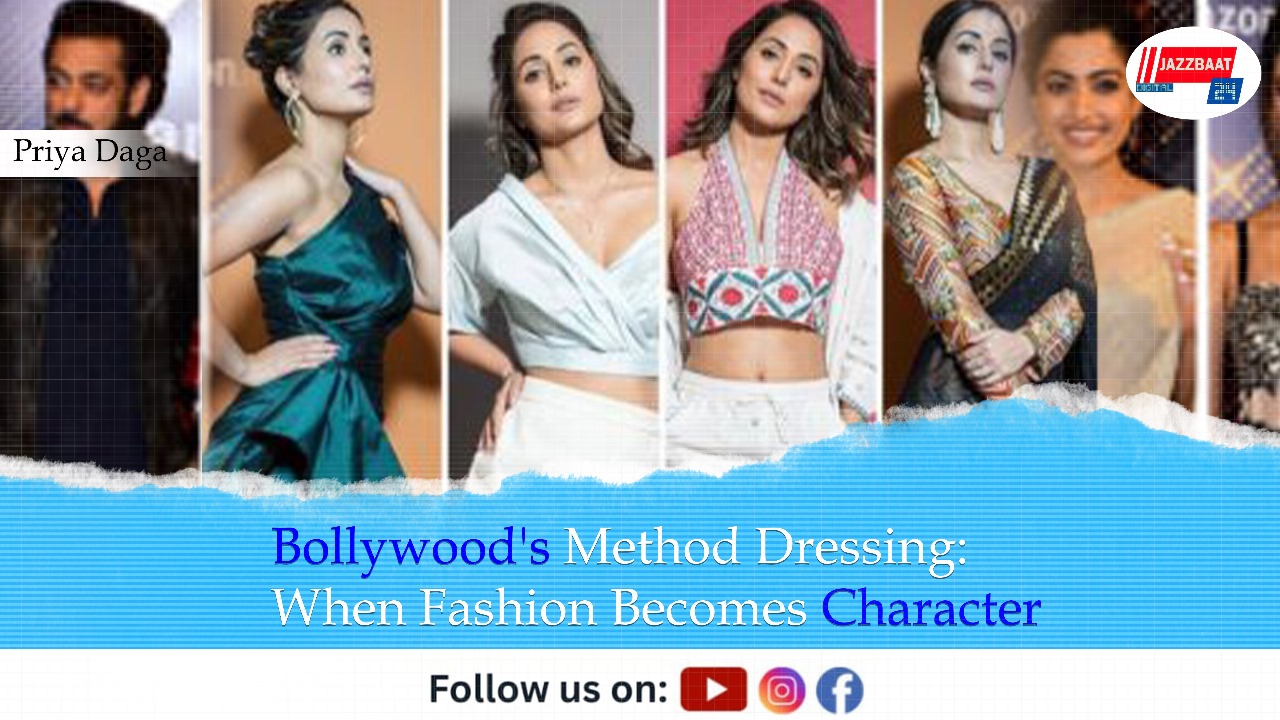In contemporary Indian cinema, a growing number of actors are embracing method dressing, transforming their wardrobes into powerful storytelling tools that blur the boundaries between performance and reality.
Method dressing extends beyond traditional costume design. It represents a commitment where actors immerse themselves in their character's aesthetic both on and off camera, allowing fashion to shape their psychological transformation and deepen their connection to the role.
Ayushmann Khurrana's portrayal in Dream Girl exemplifies this approach. His complete embrace of the dual character included voice modulation alongside striking visual elements such as shimmering sarees and bold lipsticks. The actor's dedication to authenticity extended beyond the film set, with his personal styling reflecting the same playful energy. This seamless integration of costume and character demonstrated how fashion can fuel fearless performance and enable complete reinvention.
Alia Bhatt's interpretation of Gangubai Kathiawadi showcased fashion as narrative progression. Her iconic white saris evolved throughout the film, symbolizing strength, purity, and power. Each drape marked a different stage in her character's journey from vulnerability to commanding presence. Complemented by silver jewellery, bindis, and smoky eyes, these styling choices told a silent story of defiance, creating a visual language that enhanced the film's emotional depth.
For period films, method dressing takes on additional significance. Kangana Ranaut embodied her role in Manikarnika: The Queen of Jhansi through regal saris, battle-ready armour, and traditional jewellery that extended beyond mere costume. Every pleat and braid reflected the historical figure's grace and determination, channeling both warrior strength and feminine dignity to create an authentic portrayal.
Ranveer Singh's transformation as Alauddin Khilji in Padmaavat delivered a visual masterpiece of intensity. His brocaded robes, heavy turbans, and fierce kohl-lined eyes embodied the character's dominance and menacing presence. The actor maintained this aesthetic beyond filming, demonstrating how immersive styling paired with committed acting transforms fashion into a storytelling force.
Vicky Kaushal's approach to Uri: The Surgical Strike illustrated method dressing's psychological impact. He wore military gear extensively before filming began, allowing the uniform to influence his posture and physical presence. The camouflage and combat boots transcended their function as props, becoming integral to his character's psychology. This dedication brought authenticity and respect to the military portrayal, resulting in one of Bollywood's most compelling depictions of courage and national pride.
These examples reveal how method dressing has evolved into a sophisticated artistic technique in Hindi cinema. When actors commit to their character's aesthetic completely, fashion becomes more than visual appealit transforms into a bridge between actor and role, enabling deeper emotional truth and more convincing portrayals.
As Bollywood continues to push creative boundaries, method dressing stands as evidence of actors' dedication to their craft, proving that what characters wear can be as powerful as what they say or do on screen.
